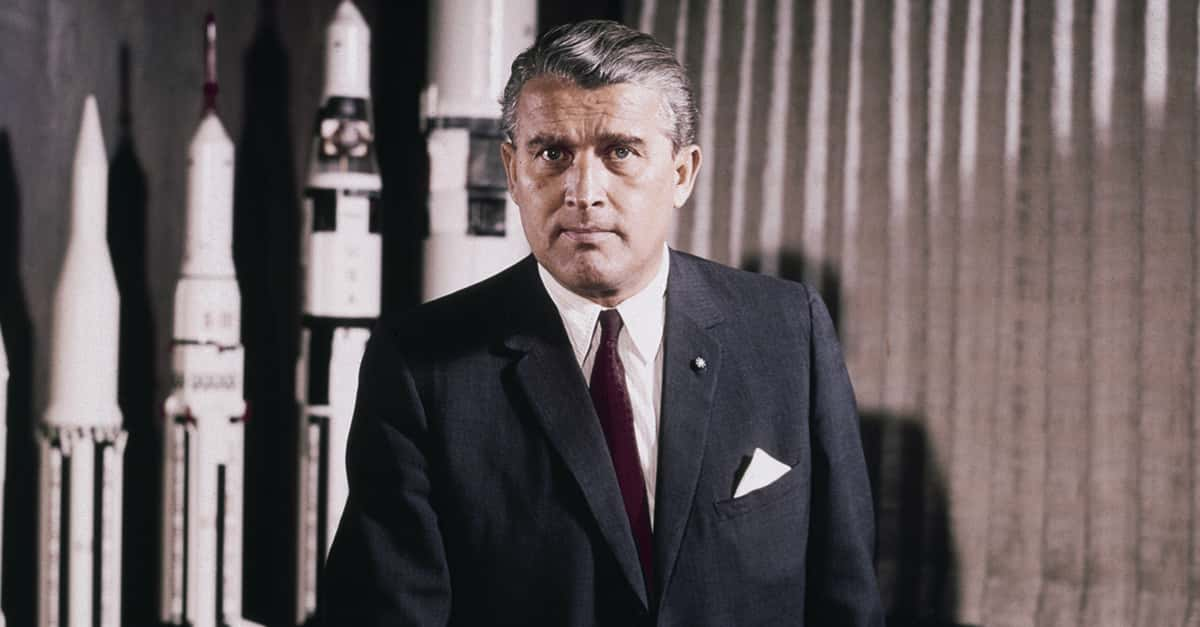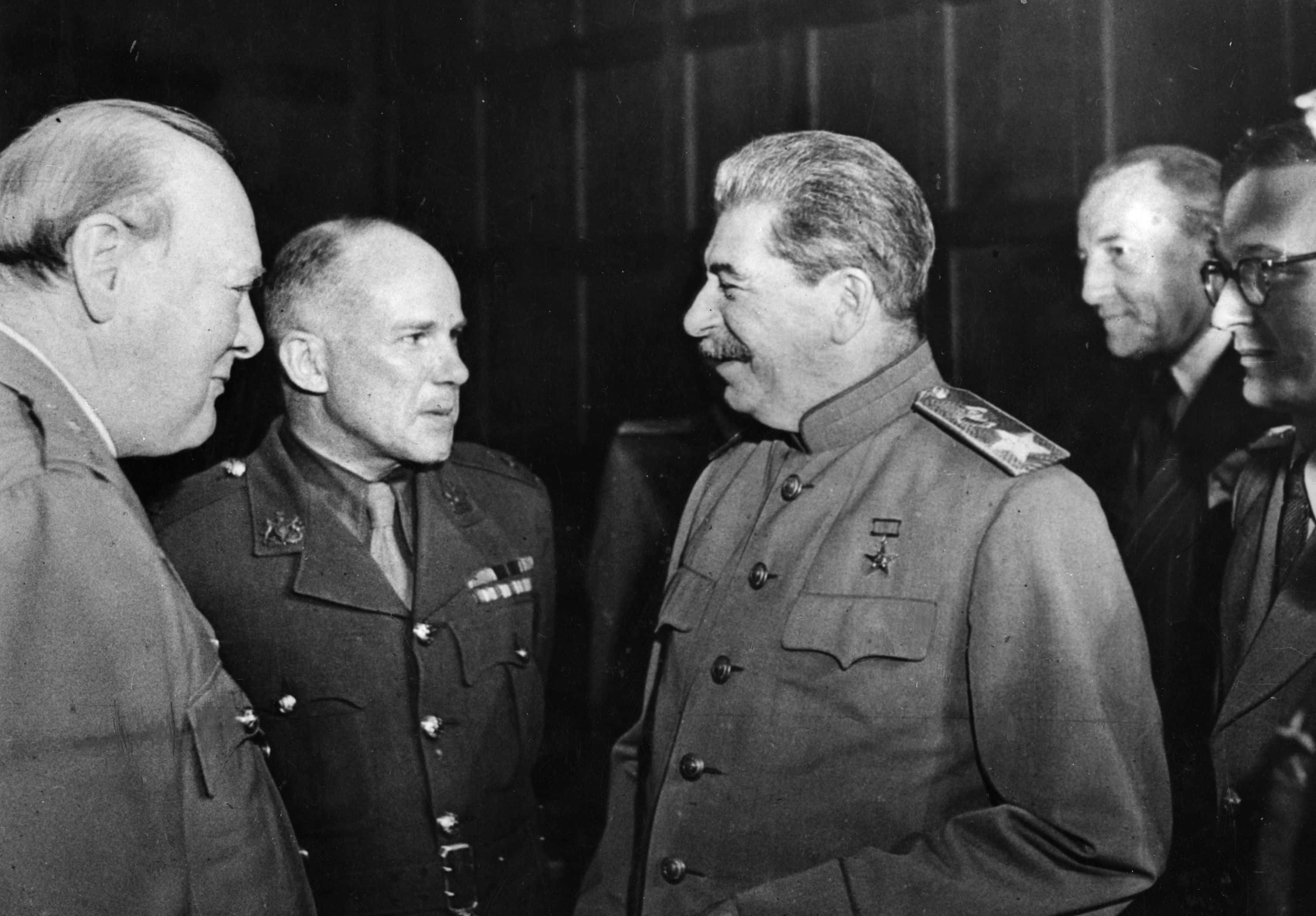On the morning of July 16, 1969, Neil Armstrong and the crew of Apollo 11 left Earth’s atmosphere on their way to the moon.
The day was tense. The moon landing was (and remains) possibly the greatest feat of engineering in human history, but success was by no means a guarantee. In the Command Room at Kennedy Space Center in Cape Canaveral, NASA’s best and brightest were a ball of nerves, mainlining coffee and chewing their fingernails.
All except for Wernher von Braun.
Von Braun was the chief architect of the Saturn V rocket, the engine that propelled the Apollo 11 mission. At 57 years old, the German scientist remained a physically dominating man—6'1" and built like a brick house. He was also an unabashed charmer. On the morning of the liftoff, as the rest of NASA’s brain trust worried and tittered, von Braun sat at the center of the room, smiled, and calmed the troops.
But while those who worked with von Braun in person universally attest to his charisma, his warmth, and his unparalleled genius, he remains one of the most controversial figures in the history of science. He's considered by many to be the father of modern rocketry—but just 25 years before his moment in the sun at the head of America’s greatest triumph, Wernher von Braun was fighting for the enemy.
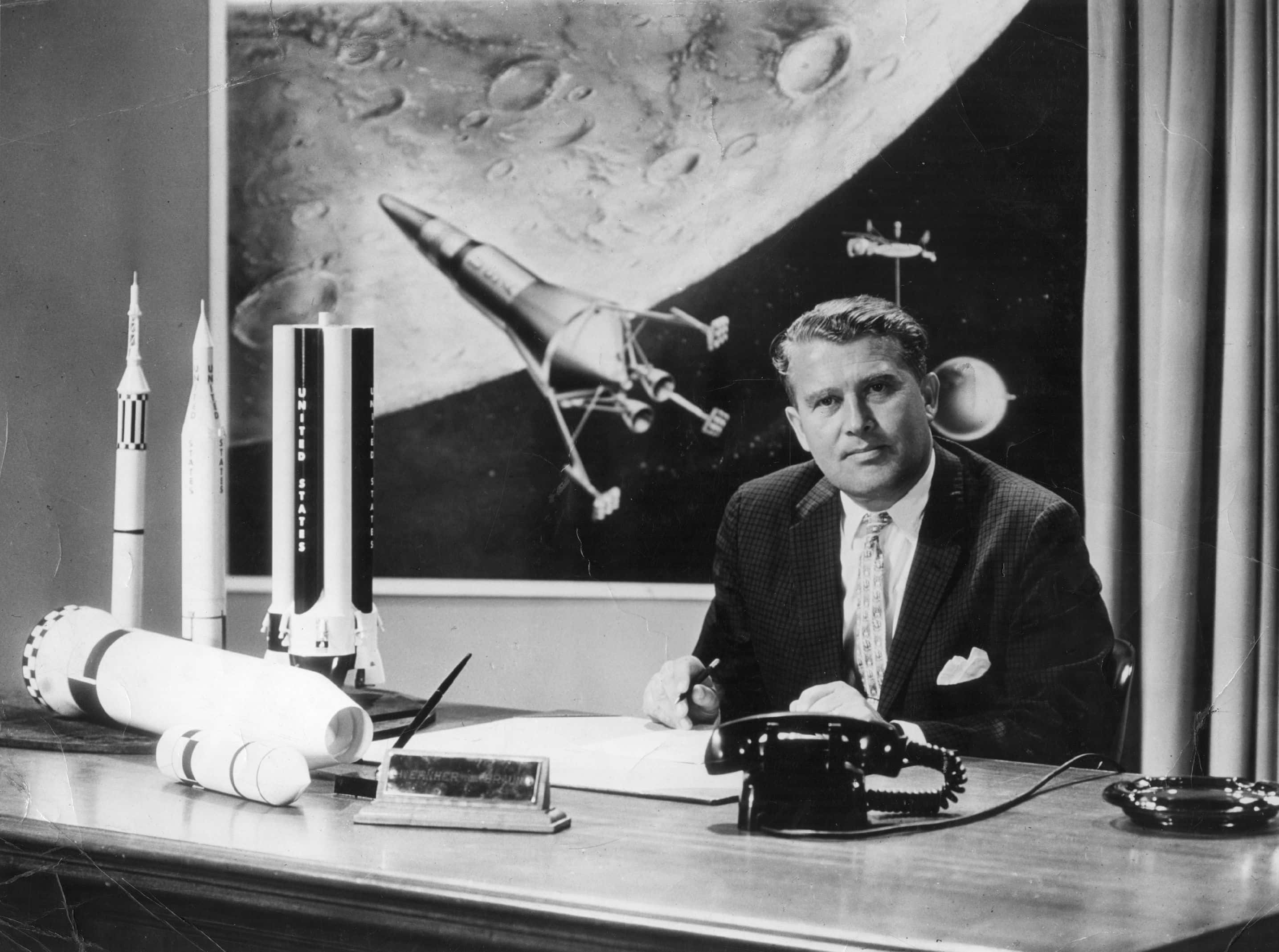 Getty Images
Getty Images
Rocket Man
Wernher von Braun’s life had the same trajectory as one of his rockets: it was a flat-out, high-speed burn.
As a young boy living in Germany, he read books by masters of science fiction like Jules Verne and H.G. Wells, who depicted fantastic scenes of rockets, astronauts, and travel to other worlds. By 13, von Braun was reading Die Rakete zu den Planetenräumen (By Rocket to Space) a mathematical treatise on the possibility of man-made objects capable of reaching orbit. By the time he was in university, he was already quite possibly one of the world’s leading experts in the science of building rockets.
But while von Braun dreamed of the applications his work might have for the future of space exploration, officials in the increasingly powerful National Socialist German Workers Party saw things differently. Before the end of his time in school, von Braun’s research had been classified by the German army, and he’d been tasked with leading a new, 100-man rocket development team.
Years later, von Braun would maintain that he was little more than a small cog in Germany's war machine. After all, in the totalitarian state that was quickly forming, there was little room for dissent. Anyone who wished to secure a successful future, particularly an ambitious research scientist, had to make their devotion to the tenets of National Socialism public.
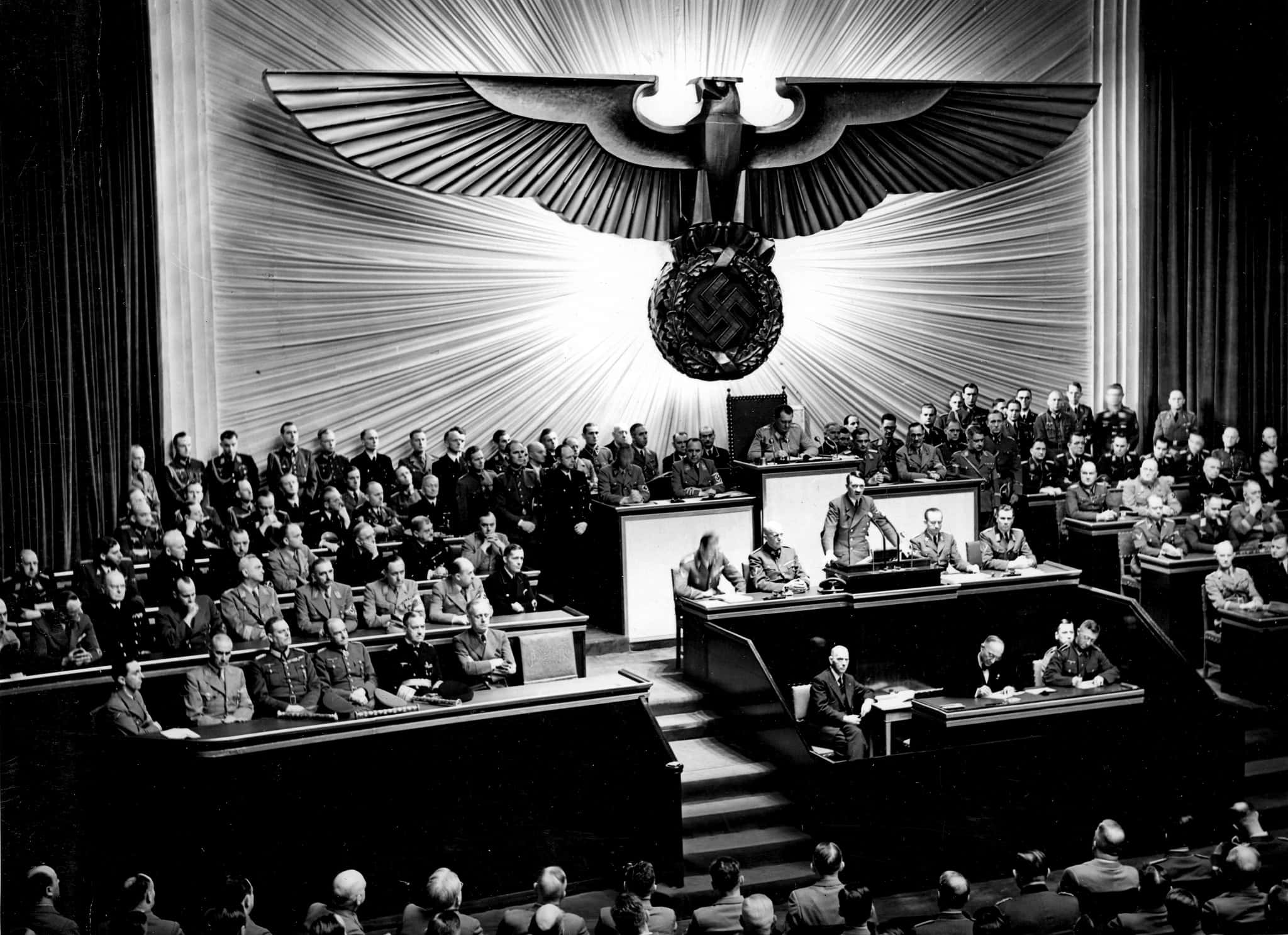 Wikimedia Commons
Wikimedia Commons
False Testimony
As von Braun himself would later tell US Army officials:
“In 1939, I was officially demanded to join the National Socialist Party. At this time I was already Technical Director at the Army Rocket Center at Peenemünde (Baltic Sea). The technical work carried out there had, in the meantime, attracted more and more attention in higher levels. Thus, my refusal to join the party would have meant that I would have to abandon the work of my life. Therefore, I decided to join. My membership in the party did not involve any political activity.”
The statement was false. Official party records (as well as the testimony of those who worked alongside him) demonstrate that Wernher von Braun voluntarily applied for party membership in 1937—before the war began.
Is it important?
Von Braun would claim that his party membership was, at worst, the mistake of a hot-headed young man caught up in the patriotic fervor of the nationalist movement. He was never political—simply a scientist with a dream, who perhaps saw loyalty to the German cause as the only route to achieving his goals.
It’s a powerful and believable argument. One sympathizes, perhaps, with the pressure any typical German would have felt in the face of the nation's horrific political tidal wave. And yet, von Braun’s involvement in German atrocities must be accounted for.
 Wikimedia Commons Long before Operation Paperclip: damage caused by one of Wernher von Braun's V-2 rockets in Britain.
Wikimedia Commons Long before Operation Paperclip: damage caused by one of Wernher von Braun's V-2 rockets in Britain.
Vengeance Rockets
The first V-2 rocket hit London in September 1944.
It was months after D-Day. Allied forces were making ground throughout Europe. The German Reich was beginning to crumble. V-2 rockets were never going to turn the tide of a war which was now quickly being lost. Named by German Minister of Propaganda Joseph Goebbels, the “V” stood for vengeance. V-2s were loud, shock-inspiring weapons. Their purpose was to wreak havoc in Europe as Germany fell apart. They were weapons of terror and revenge.
Wernher von Braun was the architect of those horrible weapons. Now 32 years old, he’d quickly become the most influential member of the German rocket program—quite possibly the most important scientist in Germany. His social status had increased in kind. He was now Sturmbannführer (Major) Wernher von Braun of the Schutzstaffel. In title and function, he was a ranking member of the Nazi elite.
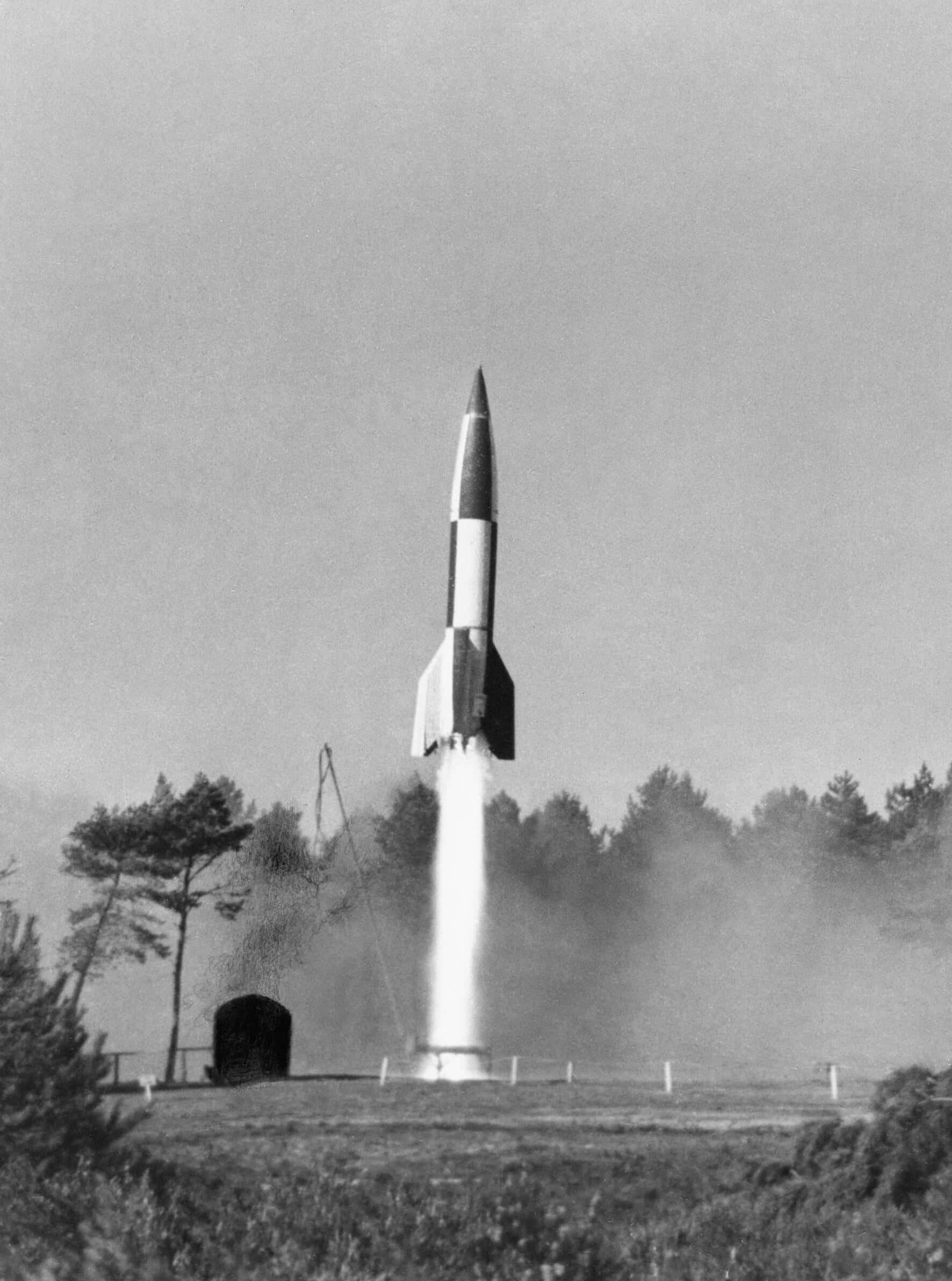 Von Braun's V-2 Rocket
Von Braun's V-2 Rocket
Still, though, as high powered V-2s rained on civilian targets in Britain and France, it would appear von Braun was morally conflicted. As he told a colleague at the time, “The rocket worked perfectly...except for landing on the wrong planet.”
Those seeking to reinforce the enduring theme of von Braun’s legacy often cite this line. The idea that he was a dreamer, an innovator, a noble scientist with a mind for exploration. That this drive got him caught up in his era’s proclivity for war.
However, when it comes to the V-2, we also encounter the most damning allegations against von Braun. The claim that the genius engineer of mankind’s greatest machines was also complicit in the Holocaust.
What Did He Know?
V-2s were manufactured at Mittelwerk, an underground German production facility designed to avoid detection from Allied bombers. In 1944, it was quite possibly the most sophisticated arms manufacturing plant in the world. It was also staffed almost entirely by forced slave labor: jews, homosexuals, and other “enemies of the state” interned at the Mittelbau-Dora concentration camp.
It’s been said that Wernher von Braun could not have known how deeply embedded the SS's genocidal infrastructure had become in the German war machine. And yet there is no doubt that on at least one occasion, the wealthy and successful von Braun toured facilities at Mittelwerk, and witnessed first-hand the conditions of work there.
To quote one post-war report on Mittelwerk:
“Everything was ruthlessly executed with utter disregard for humanitarian considerations. We were told that 250 of the slave workers perished every day, due to overwork and malnutrition. We saw many of the wretched inmates, who were in an appalling state, although receiving every medical attention now.”
 Wikimedia Commons Storage area for V-2 rockets at Mittelwerk
Wikimedia Commons Storage area for V-2 rockets at Mittelwerk
A Controversial Hero
Wernher von Braun likely did not willingly exploit slave labor—though he was undeniably complicit. In later years, he would describe the conditions he saw at Mitterlwerk as “repulsive,” while denying any knowledge of death or physical punishment among the workers. Yet how can we know?
Historians debate his involvement to this day. What has never been in question is von Braun’s lack of commitment to true Nazism. Whether he knew more than he was willing to admit, there’s no evidence to suggest von Braun worked to advance a racist agenda or held any true loyalty to the party. Indeed, as Germany’s defeat became inevitable, von Braun was quick to turn his considerable intellect to a new problem: how to continue his life’s work under a new flag.
The Beginning of the End
In May 1945, Wernher von Braun and his V-2 rocket team saw the writing on the wall. The Third Reich was in disarray: the Fuhrer was dead, and the vast majority of his high command had abandoned the cause. Even as radio broadcasts urged the German people to fight until the end, the V-2 team plotted their escape. They were scientists, not soldiers. In the chaos of the end, they were going to make their move.
They might just as easily have stayed at the V-2 research facility in North Germany, waiting to be overrun by whichever Allied force reached them first. Except that wasn’t von Braun’s style. With characteristic brashness, he insisted his team chose a nation to surrender to. After some period of discussion, they selected the Americans; Joseph Stalin’s reputation for fearsome acts made the Soviets appear dangerous.
Von Braun, for his part, also harbored a secret hope: that the American propaganda stories of a land built on scientific know-how were not all flash. Here, he believed, was a place that might finally see the potential in his rockets for exploration and discovery, rather than war.
Operation Paperclip
The surrender was hardly easy. Fascist regimes breed fanatical loyalty, and there was no shortage of vigilant German soldiers left to report the desertion of a horde of high-level scientists. Undaunted, von Braun ordered his crew to undertake the long drive south through German territory to Austria, armed only with falsified documents and adrenaline.
By May 2, their escape was complete. That morning, von Braun's brother Magnus, also a rocket engineer, approached a wary US private with a strange proposal. "My name is Magnus von Braun," he said, "My brother invented the V-2. We want to surrender." The Americans were gracious captors, and as it turns out, Von Braun and his team had chosen the right side and the right time for their own well-being.
You see, as Soviet, British, and American forces raced through Germany to reach Berlin, there was another parallel race ongoing: a mission to recover German military and technological secrets. Allied high command thus considered it imperative to loot the corpse of Germany for as much sensitive information as possible, lest it fall into the hands of the Soviets. The V-2 team was the perfect source. In May 1945, US intelligence services were ramping up "Operation Paperclip," a secret initiative that would steal hundreds of German scientists from across the Atlantic. Von Braun was its beginning.
God Bless America
Of course, von Braun’s hopeful dream of a land devoted to peaceful research was quickly—though temporarily—dashed with the operation. Before the end of 1945, von Braun and his team were installed at Fort Bliss–a secret US research facility in the Texas desert, devoted to the further improvement of V-2 rockets, which were now intended as weapons of intimidation in the burgeoning international stare-down with Russia. For the next decade and beyond, the idealistic von Braun toiled on weaponized rockets.
His luck changed on October 4, 1957, when Sputnik changed the world. The first satellite ever launched into space, Sputnik signalled the true beginning of a new era. And while American officials claimed to be unsurprised by the mission’s success, the same could not be said for the American populace. The public were shocked by the sudden perception that Soviet technology was ahead of America’s own.
The ensuing public panic became termed the “missile gap”: a perception among the US people that their military lagged severely behind the Soviets when it came to missile technology and the emerging Space Race. In reality, the gap was massively overstated. CIA analysis showed that in both number and power of missiles, the American armed forces held the advantage. But the impression of American inferiority continued to make headlines.
Give Me Some Space
Aside from John F. Kennedy (who was running for office and used the space crisis to point out President Eisenhower's weaknesses), Werner von Braun may have benefitted the most from Sputnik. Soon after the launch, he was asked to lead the new American space agency in their efforts to produce a similar satellite. It was the beginning of von Braun’s relationship with NASA—a relationship that would lead directly to Neil Armstrong’s first step on the moon.
Von Braun’s leadership of the fledgling agency over the course of its tumultuous early years is worthy of its own article. The program's many failures and von Braun’s determination in the face of adversity are both inspiring and educational. But for the purposes of this discussion, it suffices to say that his courage and ambition were instrumental in NASA’s success. It is no exaggeration to say that America’s space program owes its existence, at least in part, to von Braun’s efforts.
In fact, when von Braun died, the outpouring of public grief acknowledged his central role in getting the Earth to the moon. As President Jimmy Carter said at the time, "To millions of Americans, Wernher von Braun's name was inextricably linked to our exploration of space and to the creative application of technology. Not just the people of our nation, but all the people of the world have profited from his work. We will continue to profit from his example."

Sign up to our newsletter.
History’s most fascinating stories and darkest secrets, delivered to your inbox daily. Making distraction rewarding since 2017.
A Man for the Moon
There are few figures in history with a more controversial legacy. Carter was right: to millions of Americans, von Braun was more legend than man. The Father of Rocketry. The man who put men on the moon. To others, though, von Braun’s life remains the source of difficult moral questions.


